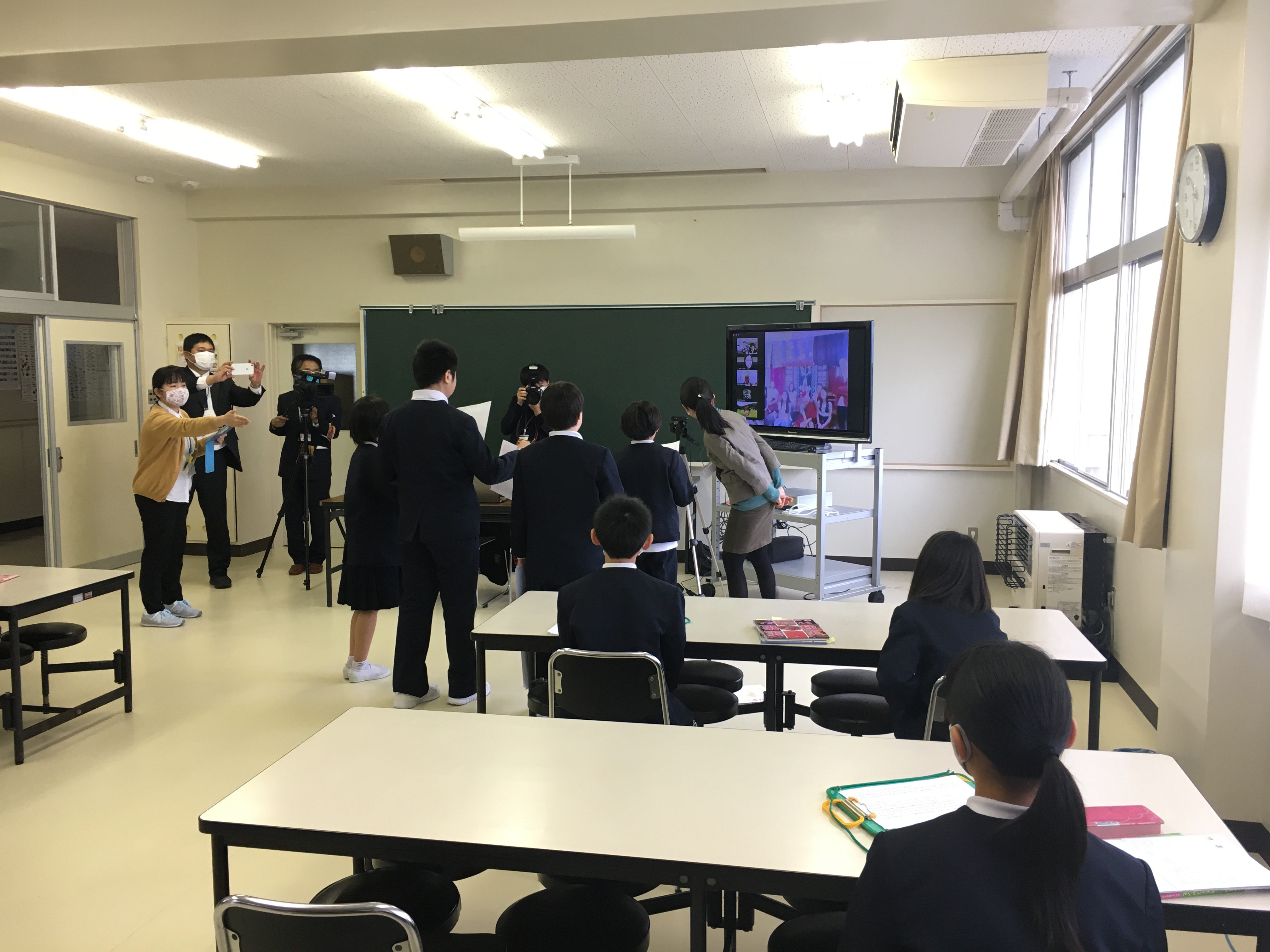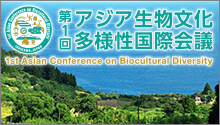Noto/Ifugao International Exchange Programme #2 took place on November 26th. The report on Programme #1, as well as an explanation of the programme can be found here.
This time the theme was food culture and the differences between the foods of Ifugao, Philippines, and Noto, Japan. As advance preparation, videos showing how to make the rice-based sweets of each region were created and exchanged. Children from Ifugao explained how to make rice cakes, and children from Noto explained how to make rice crackers.
◆Ifugao rice cakes
A traditional snack made by boiling a mixture of powdered glutinous rice, sugar, coconut powder and water, and wrapping it in a banana peel
◆Noto rice crackers
A traditional snack made by spreading sliced rice cakes on a table so that both sides dry evenly, and then frying them in oil
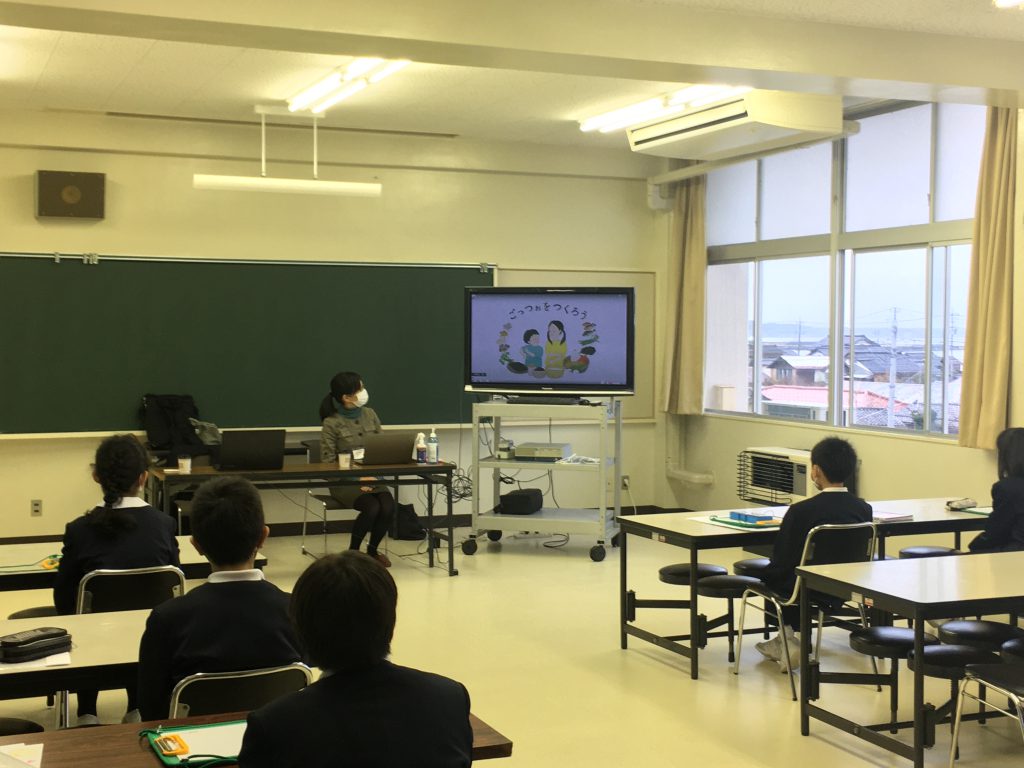
In addition to the videos created by both groups, participants watched a video about the link between the food culture, nature and agriculture of Noto entitled “Let’s Make Gottsuo (a feast)を” before the start of the programme. In Noto, the way of life that takes advantage of the blessings of Satoyama-Satoumi still exists, but there may be fewer opportunities to experience it in a home because of changes in lifestyle and family structure.
After the pre-programme activities, two schools were connected using an online meeting system, and the eagerly awaited second exchange programme began. First, students from Ifugao’s Kiangan Central Elementary School each presented a vegetable or a fruit harvested in Ifugao.
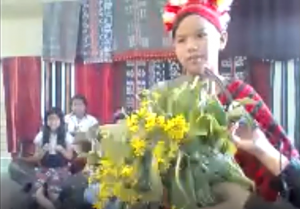
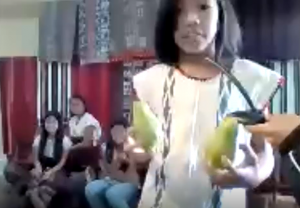
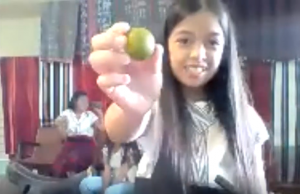
The produce included coconut, pechay, sayote and calamansi lime — food that one rarely sees in Japan. Comments such as “This contains a lot of vitamins, so it’s good for people’s health” and “I like it because it’s sweet and delicious” indicated that the children liked the food they presented and ate it often.
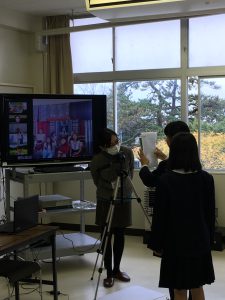
Next, children from Uedo Elementary School used panels to present the food of Suzu.
They began by presenting nigiri sushi, and oshizushi (pressed sushi), which is made for festivals and other celebrations, and vegetables grown in Suzu (daikon radish, Chinese cabbage, turnip, tomato, carrot, etc.). Next, they presented vegetables such as the distinctive regional Ohama soybeans, Okinawan spinach and Ebisu squash. Finally, they gave an explanation of dried persimmons, which are a major autumn product in Noto. This year, the Grade 1 and Grade 2 pupils of Uedo Elementary School dried 200 persimmons.
Everybody seemed to be very interested in the foods they were seeing for the first time. Even though Ifugao, Philippines and Noto, Japan are both located in Asia, they have different climates and cultures, so the fruit and vegetables that are harvested, as well as the cooking methods, are completely different.
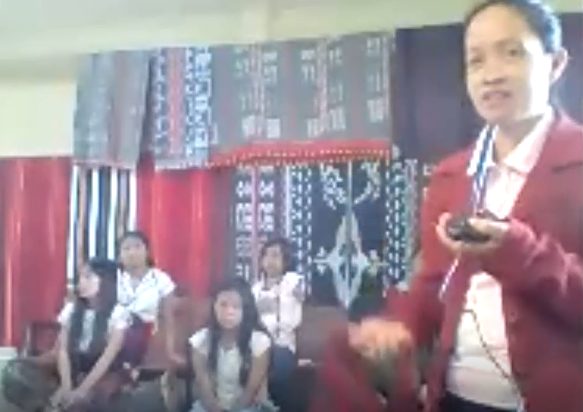
The theme for the next programme, which will be the last, will be traditional culture. The main events will be presentations of regional festivals, which will include song and dance performances.


